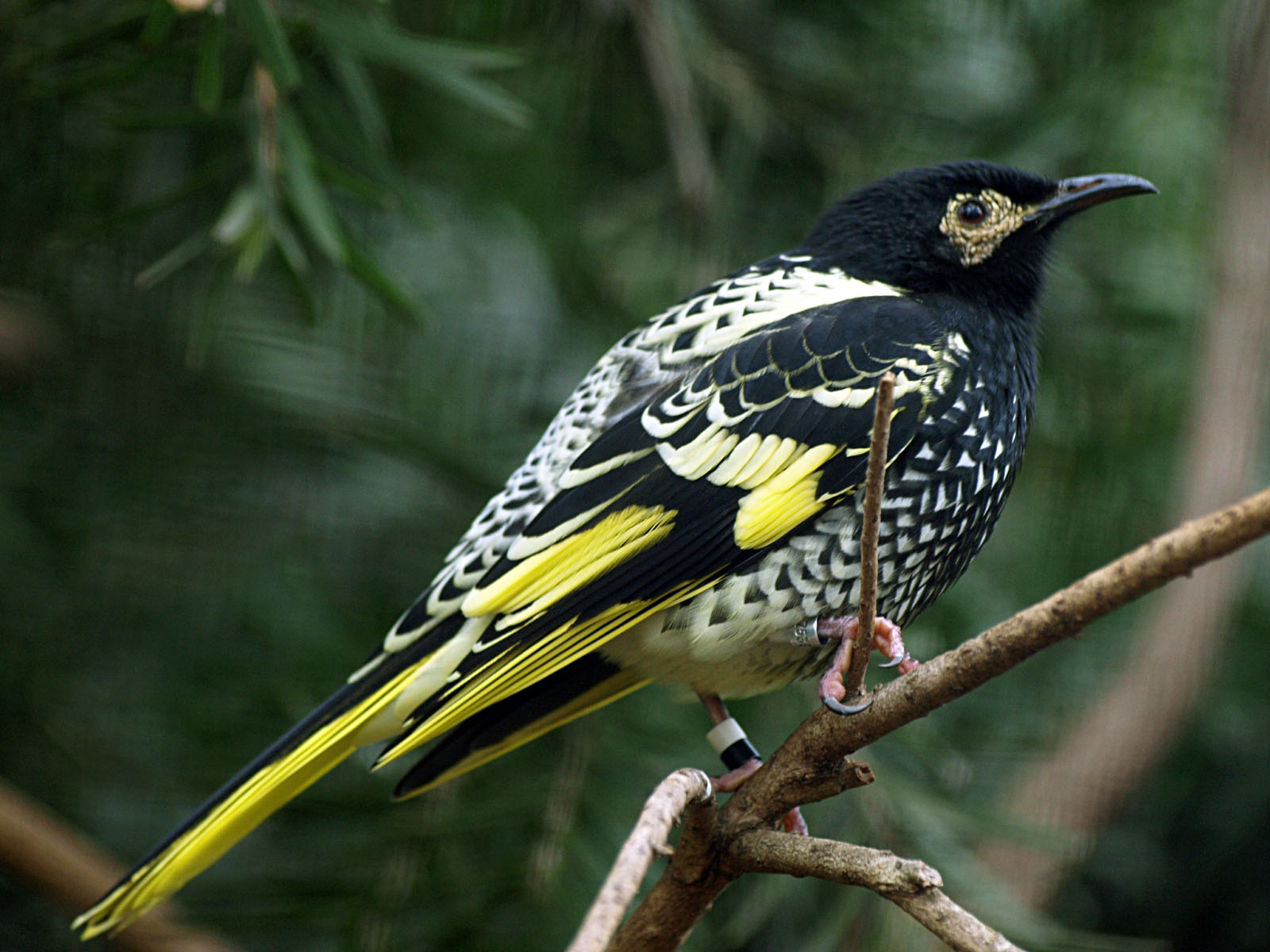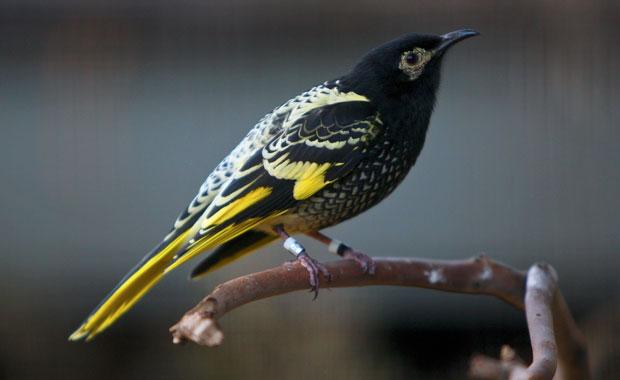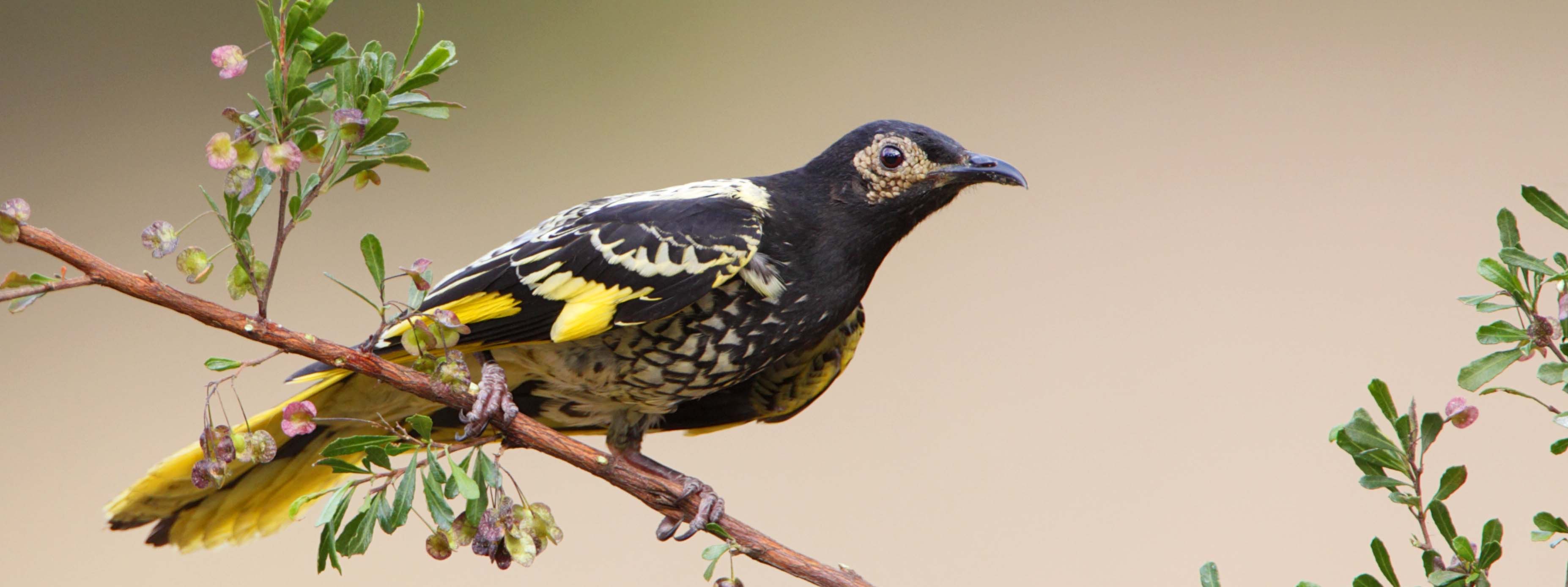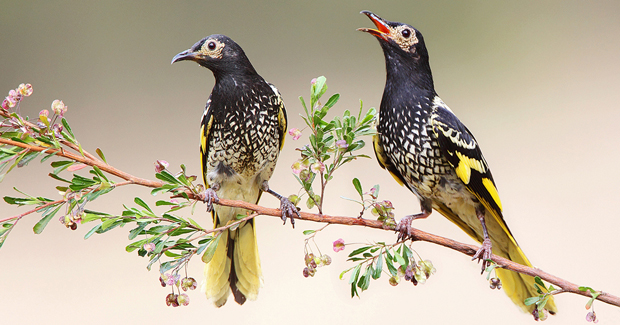
Xanthomyza phrygia
TAXONOMY
Merops phrygius Shaw, 1794, Sydney, New South Wales, Australia.
OTHER COMMON NAMES
English: Warty-faced honeyeater; French: Mйlephage rйgent;
German: Warzenhonigfresser; Spanish: Pбjaro Azъcar Real.
PHYSICAL CHARACTERISTICS
9 in (22.5 cm); 1.4–1.6 oz (39–45 g). Dark head with orange
eye patch; dark wings and tail with yellowish tips; white underparts
with black scaly pattern.
DISTRIBUTION
Southeastern Australia from near Brisbane to central Victoria.
Vagrant into Adelaide region and in many parts of range. Main
breeding populations are on northwest slopes of New South
Wales, west of the Blue Mountains, and in northeast Victoria.
HABITAT
Open forests and woodlands, especially with ironbark, riparian
woodland, coastal heathland, and tall eucalyptus forest.
BEHAVIOR
Often occur in small groups, formally in large flocks, and may
roost communally. Active and sometimes aggressive at flowering
trees, but also unobtrusive at times. Vocalizations include
bubbling, tinkling, soft song, bill snaps, trilling, mewing, and
sometimes mimicry of other honeyeaters. Display complex
movements that involve some regularity, particularly to breeding
areas, but also more nomadic outside breeding season.
FEEDING ECOLOGY AND DIET
Nectar of eucalyptus, especially ironbarks, mistletoes, banksia,
grevillea, and other shrubs. Sometimes eat fruit as well as lerp
and manna. Insects are taken from foliage and by sallying.
REPRODUCTIVE BIOLOGY
Breeding season July to January, but mostly September to November,
occasionally at other times. May be loosely colonial.
Nest of sticks and bark in high branches and forks of tall trees
or in mistletoes. Clutch of two to three eggs are incubated for
14 days. Young are fed insects, nectar, and lerp and fledge at
about 16 days.
CONSERVATION STATUS
Endangered. Populations have declined greatly in abundance
during the twentieth century, with contraction in breeding
range out of South Australia and western and central Victoria.
Some critical habitats are protected or are being reestablished,
but habitats and foods used in nonbreeding season are poorly
known, which makes conservation difficult. Breed well in captivity,
and releases of captive-bred birds into the wild have exhibited
short-term success.
SIGNIFICANCE TO HUMANS
Formerly shot as a pest in orchards, but their striking coloration
and endangered status make them high profile birds.
The New South Wales town of Barraba has adopted the regent
honeyeater as its emblem.
Other popular Animals
Photo Gallery of - Regent honeyeater




 Animalia Life
Animalia Life